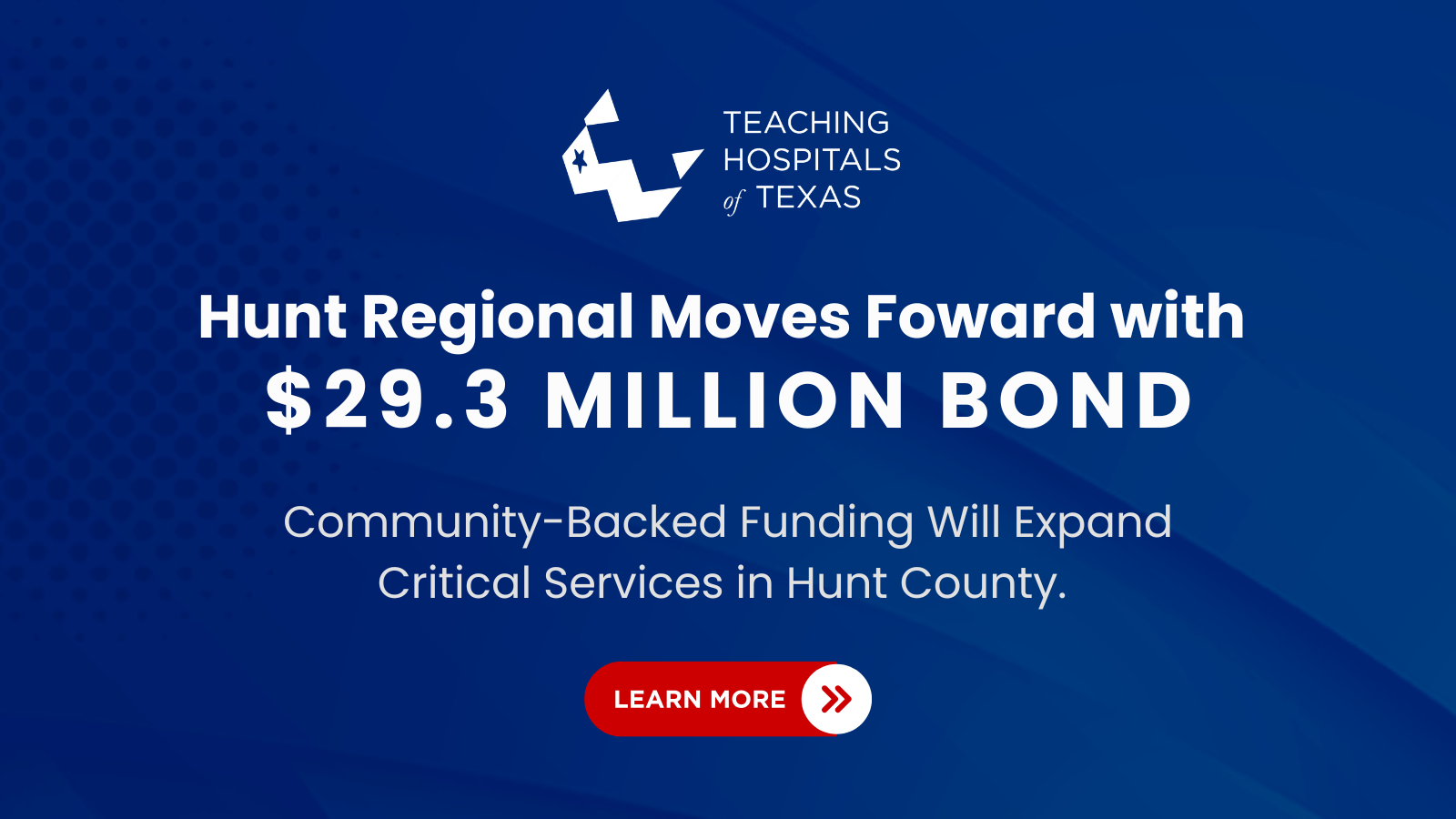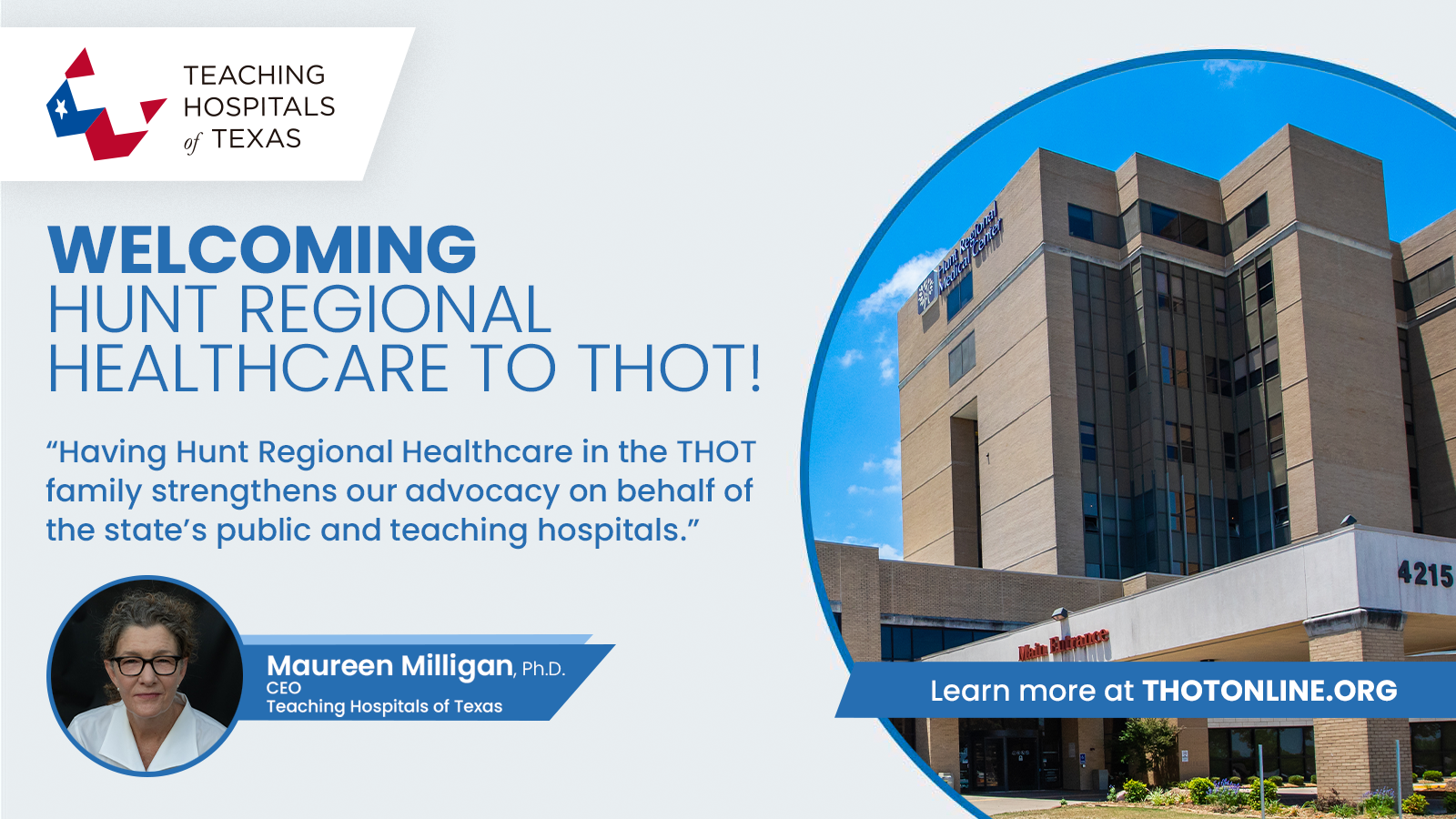Hunt County voters have officially approved a $29.3 million bond initiative for Hunt Regional Medical Center, reinforcing the region’s investment in expanding and modernizing local healthcare services. This critical funding will enable significant improvements across multiple service areas, including emergency care, cancer treatment, cardiovascular services, and inpatient capacity.
“This investment demonstrates the deep trust Hunt County places in Hunt Regional’s leadership and vision,” said Maureen Milligan, PhD, president and CEO of the Teaching Hospitals of Texas. “Teaching hospitals like Hunt Regional are deeply rooted in the communities they serve. Their commitment to innovation, access, and clinical excellence is exactly what strengthens our statewide healthcare system.”
The bond will support the replacement of a 17-year-old linear accelerator (LINAC) at the Lou and Jack Finney Cancer Center in Greenville, a vital tool used for delivering precise radiation therapy to cancer patients. It will also fund the addition of staffed emergency department beds to reduce wait times, as well as more inpatient and ICU beds to ensure post-surgical and acute care patients receive the care they need without delay.
Additionally, the initiative will enhance Hunt Regional’s cardiovascular services through expanded diagnostic and interventional capabilities, including upgrades to cardiac catheterization labs and operating rooms. These improvements will benefit patients who require procedures such as angioplasty, pacemaker implantation, and other life-saving interventions.
“This bond allows us to meet the evolving needs of our growing community while maintaining the quality of care that patients expect from Hunt Regional,” said Lee Boles, CEO of Hunt Regional Medical Center. “We’re grateful to our voters for making this possible — and we’re ready to move forward.”
Hunt Regional joined the THOT membership this year as a regional affiliate.
The Teaching Hospitals of Texas proudly supports the work of Hunt Regional and its fellow public and nonprofit teaching hospitals across the state. Strategic, community-backed investments like this one are essential for improving health outcomes, growing clinical training capacity, and expanding access to care close to home.




